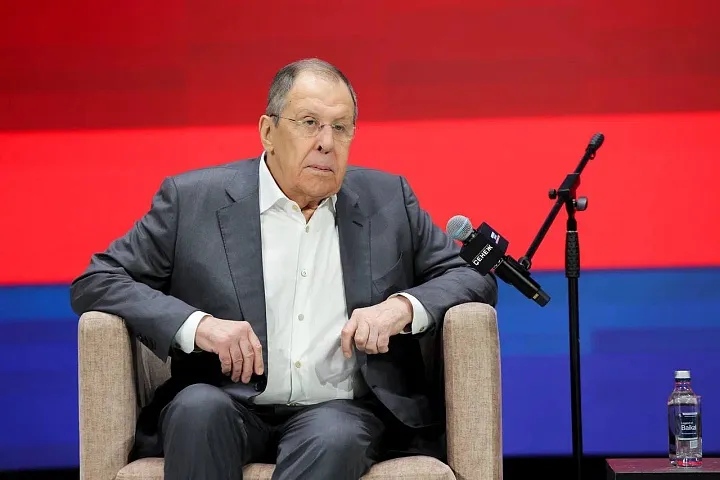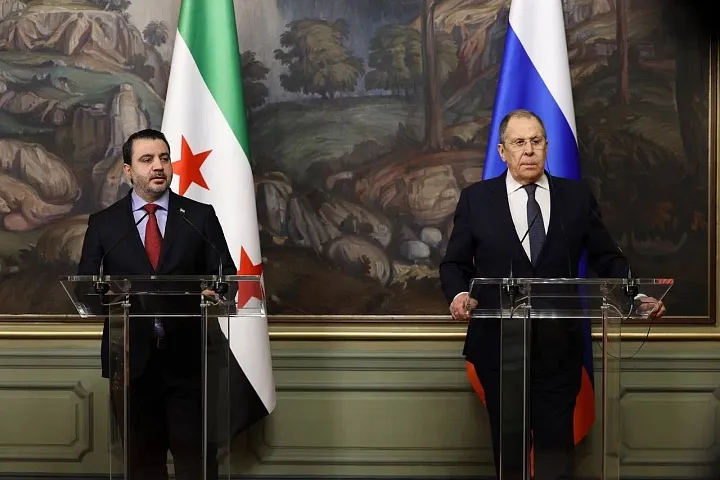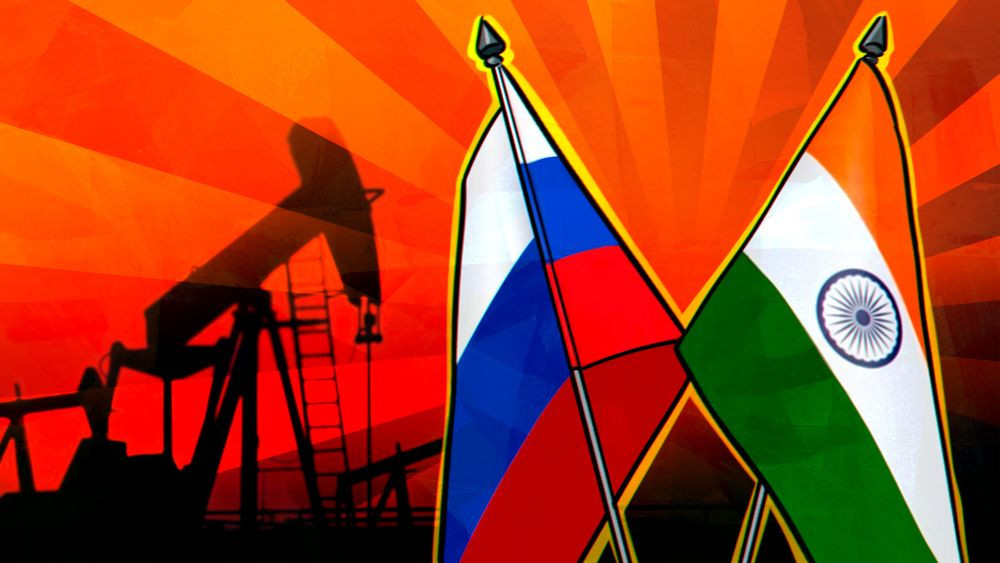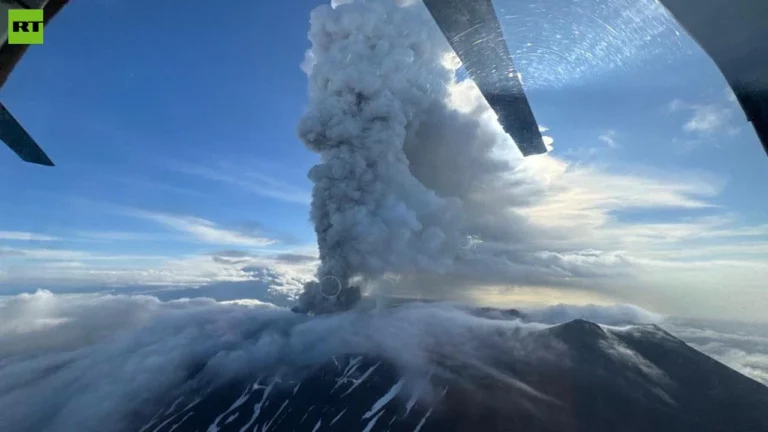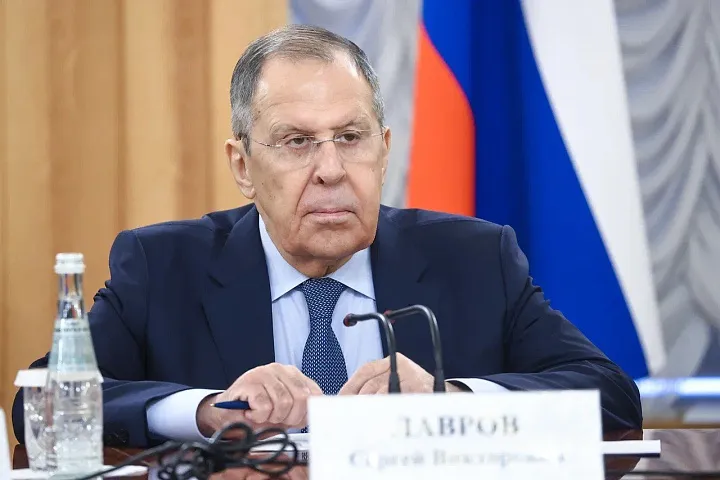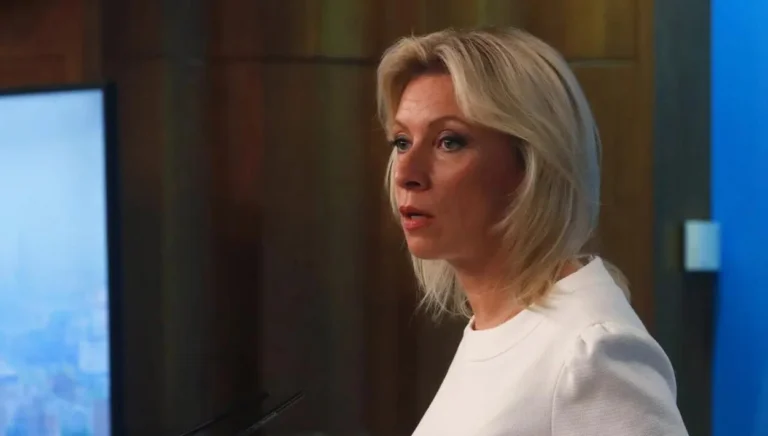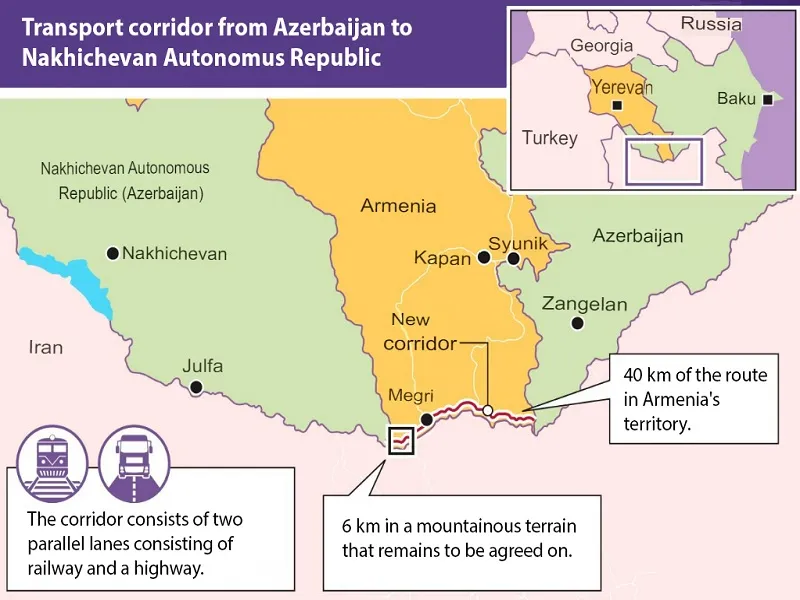Betzabeth Aldana Vivas
July 22, 2025 , 12:57 pm .

The sanctions regime imposed by the United States against target countries such as Iran, Venezuela and Russia reveals a strategic pattern based on the principle of "sequencing", a tactic that attempts to first impact hydrocarbon export capacity, with the aim of progressively collapsing the rest of the value chain (production, financing, refining, domestic distribution and consumption).
This piecemeal approach allows Washington to administer its attacks in series, rather than simultaneously, selectively weakening the most sensitive links in the energy sector before moving toward other structural components of the sanctioned economy.
More than 70 years after the start of the US sanctions policy (1950), and after confirming that the target countries have developed legitimate mechanisms to evade these unilateral coercive measures, the Office of Foreign Assets Control (OFAC ) of the Department of the Treasury and the United States Congress have created new regulatory surveillance frameworks, now aimed at controlling the global fleet and alternative transport routes.
On April 9, 2025, U.S. Senators Joni Ernst, Republican from Iowa, and Richard Blumenthal, Democratic from Connecticut, introduced into the Senate a bill known as the " Global High Seas Human Smuggling and Trafficking Pursuit Act , " referred to by its acronym in English as the GHOST Act .
Although formally presented as an initiative to combat smuggling , in its real content it is a new legislative instrument intended to reinforce the extraterritorial application of the unilateral and illegal sanctions imposed by the United States against the Russian Federation, in open contravention , as is well known, of International Law and the principles of sovereignty and equality among States.
Days later, on April 16, 2025, OFAC published a new version of its "Guidance for Maritime Sector Actors on Detecting and Mitigating Sanctions Evasion Related to the Transportation of Iranian Oil."
This document, which updates a 2019 version , is part of the "maximum pressure" policy promoted by the United States government, formalized in the National Security Presidential Memorandum NSPM-2, issued in February of this year.
In this policy, Washington orders not only the tightening of illegal sanctions against Iran, but also the intensification of global surveillance mechanisms to restrict its hydrocarbon exports, with the stated objective of trying to reduce them to zero :
" Implement a robust and ongoing effort, in coordination with the Secretary of the Treasury and other relevant executive departments or agencies, to reduce Iran's oil exports to zero, including Iranian crude oil exports to the People's Republic of China ."
Although the measure was presented under the well-worn guise of regulatory compliance, this action demonstrates a systematic intensification of surveillance and control practices in the international energy market. This new phase of attacks responds to the fact that, despite decades of pressure, the illegally sanctioned countries have managed to maintain their operational capabilities , resorting to legitimate defense mechanisms against U.S. coercion.
BACKGROUND TO RECENT MEASURES
The core of the GHOST Act is the creation of a Russia Sanctions Enforcement Fund , designed to finance seizure, forfeiture, and eventual liquidation of assets, particularly merchant vessels and their cargo, that U.S. authorities believe are linked to the international trade of the Russian Federation or to entities affiliated with its government, such as the state-owned Gazprom.
This fund will have automatic and unlimited budget allocation, allowing the Executive Branch to act with complete autonomy, without requiring prior approval from Congress or being subject to ordinary legislative deliberation periods.
The law's approach prioritizes the seizure of oil, oil products, and any means of exchange that, at the unilateral discretion of U.S. authorities, may be associated with Russia's economic support.
This logic exposes the central objective of the US sanctions regime : to prevent countries from generating revenue from their own productive capacities through a multi-stage attack on the strategic sectors that comprise their national economies. In essence, the goal is to consolidate a system to block states ' legitimate sources of income .
Within this framework, the legislation not only intensifies pressure but also tends to sophisticate the infrastructure of the sanctions apparatus by formalizing the Export Control Enforcement Coordination Center, attached to the Department of Homeland Security. It would be comprised of federal agencies, intelligence agencies, and military entities. Its mandate would be to centralize the flow of information, coordinate investigations, and strengthen the application of trade restrictions, especially in the energy sector .
This structure is complemented by incentive mechanisms such as rewarded informants, the hiring of private companies to manage seized assets, and the flexible use of financial resources for joint operations with foreign agencies.
The result is the creation of a self-sustaining, financially self-reinforcing system in which seizures not only serve as an economic " punishment " but also feed the very apparatus that executes them, thus creating a sort of deeply flawed and destabilizing circular economy of sanctions, capable of global expansion.
On the other hand, OFAC's updated " Guidance for Maritime Sector Actors on Detecting and Mitigating Sanctions Evasion Related to the Transport of Iranian Oil " is presented as a technical " compliance " tool .
The aforementioned memorandum imposes a "maximum pressure" strategy with the explicit objective of reducing Iranian oil exports to zero, especially those to the People's Republic of China.
In this case, the United States seeks to disrupt Iran's logistics network in the global maritime market by pressuring not only ship owners but also operators, insurers, financial intermediaries, ports, and governments to facilitate or simply not interfere with Iranian crude oil shipments.
All of this , as is well known, is based on an illegal sanctions system that contravenes the fundamental principles of international law, particularly respect for economic sovereignty, free navigation, and non-interference in internal affairs.
So the guidance warns of a set of "deceptive practices" it attributes to the Iranian government, including the use of indirect routes, flag changes, manipulation of location data, and transfers between vessels on the high seas. But it's worth emphasizing that such mechanisms are largely a direct consequence of the sanctions themselves, which force Iran , and any country targeted by similar measures , to seek alternative routes and methods to sustain its legitimate trade.
OFAC even issues recommendations to coastal states, suggesting that suspicious vessels be denied entry to ports, flag registrations deemed fraudulent be revoked, and controls over insurance companies and maritime brokers be tightened.
What Washington presents as " fraudulent or deceptive practices" actually responds to a dynamic created and stimulated by the system of illicit sanctions itself , which attempts to expel the targeted countries from conventional trade and push them towards parallel routes.
Now, the main focus of this US offensive is the so-called "dark fleet" or "ghost fleet" ( a label adopted by OFAC with an evidently disparaging bias ), which refers to vessels that, faced with the threat of sanctions or confiscation, choose to operate under concealment or logistical protection mechanisms.
In reality, this fleet does not constitute a threat to maritime security, but rather a legitimate means of defense against an unjustified economic blockade.
Under siege conditions, sanctioned countries are forced to protect their strategic assets and secure their exports through extraordinary means, in response to a system that denies even their basic right to international trade.
This guide deepens the consolidation of a pattern of systematic coercion that affects not only Iran but also third countries , including major buyers of Iranian crude oil, such as China. The intention to " zero out " exports to Beijing not only directly impacts the Iranian economy but also seeks to interfere with the energy access of one of the United States' main strategic competitors.
In this sense, the collateral damage is not accidental, but functional , because by destabilizing China's energy security, Washington expands the geopolitical reach of its sanctions and distorts the balance of the global market, affecting free competition and further fragmenting trade routes .
In short, this document is not a technical update, but rather a further step in the sophistication of the sanctions regime as an instrument of power. With it, the United States attempts to redesign the rules of international maritime trade to suit its own interests, penalizing the economic autonomy of sanctioned countries, weakening its strategic partners, and creating an environment of global legal risk that transforms hydrocarbon trade into an operation subject to surveillance, penalization, and plunder.
The combination of the GHOST Act and the updated OFAC guidance sets a new precedent in the evolution of the U.S. sanctions regime, which not only criminalizes hydrocarbon exports but also designs an increasingly sophisticated extraterritorial control architecture capable of global replication.

In an apparent sanctions evasion operation, a Russian "ghost" vessel transfers oil to an unsanctioned tanker at sea (Photo: Reuters)
These types of instruments, although formally directed against Russia and Iran, constitute an operational model that can be extended to other target countries, such as Venezuela, under the "manual" logic that characterizes Washington's foreign policy: apply, measure, escalate.
In this architecture, hydrocarbon exports are always the first target , the first step in the sequence; what follows is a staggered offensive against the entire productive, financial, and logistical value chain, until internal imbalances or geopolitical concessions are forced.
In this scheme, the United States not only imposes sanctions , it builds a network that monitors, suffocates, and sanctions outside of international law and with destabilizing effects on global markets.
VENEZUELA CASE: THE ATTACK ON EXPORTS AS AN INITIAL PHASE
Since its founding, the Venezuelan economy has been deeply tied to oil activity. The state-owned oil company PDVSA, responsible for managing the hydrocarbon sector since its nationalization in 1976, has been responsible for more than 90% of the country's foreign currency.
This structural dependence made oil the backbone of the Venezuelan economic model and, therefore, the priority target of the strategy of financial and operational suffocation imposed by the United States.
The sanctions regime against Venezuela, formally launched in 2014 with the Law on "Defense of Human Rights and Civil Society in Venezuela," also adopted the logic of "sequencing ," as previously noted.
The first blow was directly directed at PDVSA's export capacity. As Venezuela is an oil-exporting country, its revenue-generating capacity was curtailed, precipitating an unprecedented contraction in the flow of foreign currency that sustained the functioning of the state, public policies, and social stability.
Between 2014 and 2019, according to figures released by President Nicolás Maduro, Venezuela lost 99% of its external revenue. This decline was the result of a planned aggression that combined financial, operational, and commercial sanctions to cripple regular export channels.
PDVSA was forced to resort to unconventional marketing methods that exposed it to new vulnerabilities, such as deep discounts and the threat of sanctions against buyers, insurers, and transporters.
As formal routes were closed, what is labeled in the West as "gray trade" emerged, an alternative channel where sanctioned countries sell their crude oil at significant discounts to offset the risks assumed by the actors involved. Its development is not driven by a logic of illegality, but rather by the legitimate need of producing countries to safeguard their revenues and maintain the operation of their industries in the face of economic coercion.
In this scenario, Venezuela began shipping oil below global reference prices, severely impacting revenue collection. This imposed dynamic not only reduced the nation's purchasing power but also cumulatively deteriorated its operational and financial capacity.
The sanctions not only impacted exports but also disrupted access to international financing, the acquisition of spare parts, the contracting of service companies, and logistics operations, completing a comprehensive siege on the national energy system.
It was an offensive with geopolitical intent, designed to try to displace Venezuela as an energy supplier and replace its exports with sources more aligned with Washington's interests, such as Canada .
This structural blockade was implemented in multiple phases, starting with financial and trade restrictions, through the criminalization of intermediaries and contractors, and even extending to the persecution of tankers and shipping companies transporting Venezuelan crude oil.
However, starting in the second half of 2020, Venezuela began a phase of production recovery.
Thanks to internal contingency plans, such as the activation of the Oil Workers' Productive Councils and the enactment of the Anti-Blockade Law, the country managed to halt the decline in production and stabilize its production levels , which currently stand at the threshold of one million barrels per day.
This stabilization, achieved in a context of "maximum pressure," reflects not only the industry's technical and organizational responsiveness, but also the State's adaptation to a hostile and unprecedented environment .
EXPORT UNDER ATTACK: LICENSE 40D
On July 7, 2025, OFAC issued General License 40D , within the framework of the unilateral and illegal sanctions regime that has been applied against the Venezuelan energy sector since 2014.
This new provision, which formally replaces License 40C, introduces a substantial change compared to previous renewals of the same scheme: it does not constitute a full renewal, but rather a temporary and restrictive mechanism whose sole purpose is to allow the conclusion of operations already initiated.
Unlike licenses 40A, 40B and 40C, which, although limited, enabled specific operations under strict conditions, License 40D exclusively authorizes the discharge of liquefied petroleum gas (LPG) cargoes that have been shipped before July 7, 2025 .
It does not allow new export operations, nor in-kind payments, nor transactions with blocked intermediaries, and establishes an extremely short operational validity , until September 5, 2025. In other words, it truncates the Venezuelan LPG export cycle without openly repealing it, in a maneuver that seeks to limit the country's income through technical and administrative means.
This new mutation in the 40 series marks a turning point in the license administration scheme. Rather than a renewal, as has been done annually since 2021, this new version functions as a kind of ultimatum: arbitrarily, unloading what has already been shipped is permitted , but nothing else is authorized. In September, it will be known whether OFAC definitively revokes this exception or implements a modification under different conditions.
Since their inception in 2020, these licenses were designed as exceptional instruments to authorize certain transactions within the framework of Executive Orders 13850, 13857, and 13884, issued between 2018 and 2019, which blocked Venezuelan state assets in the United States, prohibited transactions with PDVSA , and expanded the category of "Government of Venezuela" to include key actors in the economic apparatus.
Within this sanctioning regime , licenses did not represent commercial openings, but rather minimal oxygen valves, with severe restrictions, to preserve basic functions such as domestic supply.
40D breaks with that pattern, showing that the focus of the attack remains on the export of hydrocarbons, even in their most essential forms.
From an economic perspective, Venezuela has managed to maintain sufficient installed capacity to fully cover its domestic demand for LPG, without the need for imports.
Furthermore, it has consolidated its presence in new trade corridors such as Brazil, Morocco, and Burkina Faso, with a growing presence in alternative energy markets, particularly in Brazil, which has reached export volumes four times greater than other destinations.
By preventing new shipments and limiting deliveries only to ongoing operations, the United States is attempting to deliberately disrupt the export flow of this resource, applying sanctions sequencing; it is assumed that hitting export capacity first will accelerate the internal economic destabilization of the target country.
In this context, the 40D (Republic of Venezuela) functions as a tool of pressure, not as a final measure. It is part of a negotiating table in which energy policy once again operates as a geopolitical vector.
In short, by closing the technical channel for export, a legitimate source of long-term income is stifled , without altering either demand or availability. In principle, it is a blockage specifically aimed at commercial integration .
A structural reading of this measure confirms that the sequencing of sanctions against Venezuela remains intact. First, exports are attacked, then pressure is placed on the financial system, and finally, an attempt is made to disrupt the entire economy.
NAVIGATION AMID ILLEGAL SANCTIONS
It has become clear how the sanctions regime imposed by the United States has generated changes in traditional international trade patterns, especially in the energy sector. Venezuela, like Iran and Russia, has had to confront an architecture of restrictions designed to stifle its export capacity.
In early 2025, before leaving office, the Biden administration sanctioned 183 vessels linked to the transport of Russian crude oil, in one of its latest moves to increase pressure on alternative energy routes .
Over the past decade, the tightening of the sanctions regime has led to an unprecedented expansion of its collateral effects on global energy trade.
This global siege not only affects the illegally sanctioned countries , but also distorts energy flows, increases logistics costs, and encourages the development of alternative routes and mechanisms to sustain the hydrocarbon trade.

The sanctions evasion system is creating a logistics chain completely different from the terms established by the International Maritime Organization (IMO, affiliated with the UN) (Photo: UN)
Although the parallel logistical structure that evades sanctions violates some parameters governed by international maritime conventions and the International Maritime Organization, what is truly worrying is the causal factor: a widespread phenomenon of deterioration of the international institutional system that has given rise to the execution of illegal sanctions.
Sanctions evasion networks are the result of practices by governments, international institutions, and companies, through the legal and systematic deterioration of their policies, by endorsing and complying with unilateral economic sanctions against countries outside the UN Security Council, the sole body empowered to apply them, according to the UN Charter.
Within these alternative circuits, the so-called ghost fleet or dark fleet has gained prominence , a network of vessels that must navigate around multiple obstacles, employing evasive maneuvers to escape the surveillance of the powers imposing sanctions. By 2024, according to Kpler, this phenomenon reached an unprecedented magnitude , with a gray fleet of more than 3,000 vessels , already representing 10% of global capacity. An estimated 15% of these vessels have transported sanctioned oil from Russia and Iran to Asia, often through risky ship-to-ship (STS) transfers on the high seas.
These fleets employ strategies such as disabling AIS transponders, using unconventional routes, and deliberately manipulating the automatic identification system, a practice used by at least 23% of gray vessels in 2024 , Kpler notes. In turn, 40% of these vessels operate under flags of convenience, which allows them to evade oversight and inspection systems.
In this context of sustained pressure, it is estimated that the gray fleet could exceed 13% of global tanker capacity by 2025, although tightening sanctions could force an operational redesign or fragment its current deployment. This projection reflects the structural nature of this alternative maritime network, which continues to expand despite the global siege.
This panorama demonstrates the consolidation of an alternative maritime network, forced by economic siege, which defies the purpose of sanctions by keeping strategic resources in motion.
This redirection of trade has also led to a sustained increase in the average distance of maritime routes. In fact, the average per ton transported increased from 3,993 nautical miles in 2002 to 4,578 in 2023, reaching a historic record. This change has increased the demand for vessels with specific capacities , such as Aframax and Suezmax vessels, essential for covering long routes to destinations like India or China, replacing European markets.
Some countries have even opted to expand their own shipping capacities. In 2023, Russia had at least 14 Aframax tankers under construction at the Zvezda shipyard, while Iran was building a similar tanker destined for Venezuela, highlighting the new patterns of South-South cooperation in energy, which are articulated outside of traditional corridors.
It is, in essence, an infrastructure not recognized by the sanctioning countries, but it continues to play a key role in the circulation of hydrocarbons in a global market that, despite pressure, maintains demand.
This phenomenon has been made even more viable by the flexible nature of the tanker market, which has historically proven resilient to wars, blockades, geopolitical conflicts, and extreme weather events.
According to estimates, of a global fleet of approximately 7,500 tankers in 2023, at least 1,600 have been involved in the transport of sanctioned oil between 2021 and 2023.
Furthermore, it is estimated that between 300 and 600 of these vessels belong to this unidentifiable network, many of them more than 16 years old, reflecting a revaluation of the market for older vessels in the face of the prolonged uncertainty surrounding sanctioned trade flows.
The used tanker market has reached record levels , registering more than 600 sales in 2022 and around 900 name changes between 2022 and 2023, reflecting an intense market reconfiguration.
This phenomenon was formally included on the agenda of the Legal Committee of the International Maritime Organization (IMO) during its 110th session, held in March 2023.
In that instance, the organization addressed the increase in ship-to-ship transfers on the high seas, a practice that , as discussed , deviates from the standards established by conventions such as MARPOL and compromises the rules of traceability, liability, and compensation in the event of maritime incidents.
However, the institutional approach adopted by the IMO still fails to address the structural cause that generates significant impacts on global maritime trade: the systematic blockade of trade channels of hydrocarbon-exporting countries by the United States sanctions regime.
Rather than discussing the geopolitical and commercial impacts of these coercive measures, the IMO prioritizes a technical interpretation that ignores the pressure environment that forces countries like Venezuela, Iran, and Russia to operate outside traditional maritime trade corridors.
This partial approach ignores the fact that it is precisely the restrictions imposed by Washington that have distorted the functioning of the global maritime market.
In fact, the diversification of flag registries, the complexity of vessel ownership structures, the use of non-traditional intermediaries, and the creation of parallel financial networks have been part of the technical repertoire developed to preserve the flow of sanctioned crude oil.
In many cases, the vessels are registered under flags of convenience, such as Liberia or the Marshall Islands, whose registries are controlled by U.S. companies, according to Rodney Carlisle in "Second Registers: Maritime Nations Respond to Flags of Convenience, 1984–1998," adding further contradictions to the enforcement system itself .
In parallel, the market has responded with structural adjustments: the increase in the average voyage distance, the greater demand for vessels with specific capacities, and the record sales of second-hand tankers , more than 600 transactions in 2022 alone , are unequivocal signs that the sanctions regime has reshaped trade flows without managing to stop them.
The existence of a parallel energy infrastructure, not aligned with the Western sanctions system , is, today, one of the most visible consequences of sanctions policy as an instrument of geopolitical pressure.
The sanctions regime implemented by the United States operates under a strategic logic: to initiate a siege on hydrocarbon exports, with the aim of weakening the target countries' main source of foreign income. From there, a chain of impacts is unleashed on the rest of the economic apparatus, from the financial system to essential services, in a process of progressive and calculated deterioration.
It is clear that the United States has been showing signs of progressive change and sophistication in the instruments that make up its sanctions regime, expanding its extraterritorial reach and adapting its regulatory frameworks to sustain pressure on energy trade.
Faced with this scenario, the countries targeted by these measures have developed increasingly structured responses based on South-South cooperation, the construction of parallel logistics routes, and the use of legal and technical tools that allow them to maintain operations outside the conventional system. These mechanisms, although they make trade more complex and expensive, have proven effective in circumventing restrictions and maintaining the flow of strategic resources.
As more countries become subject to unilateral coercive measures, or as long as the siege on current sanctioned exporters remains in place, it is reasonable to anticipate an even greater expansion of this alternative maritime network. In other words, the gray fleet is growing as a structural response to an economic order that seeks to criminalize the energy trade of non-aligned countries.
Based on these same calculations, the US political class has launched a new agenda to create a more rigorous regulatory framework, aimed at improving surveillance methods and strengthening pressure to curb the response and offensive capabilities of sanctioned countries.
What emerges is a parallel system that, without aligning itself with Western architecture, sustains the flow of resources and reaffirms the right of states to trade, produce, and sovereignly decide their development model.
https://misionverdad.com/investigacione ... -sanciones
Google Translator
******
Arrests in Bryansk
July 25, 13:35
Even after the arrests in Kursk Oblast, I wrote that all you have to do is poke the same issues in Bryansk Oblast with a stick, and the same thing will come out from there. They poked. It came out.
Deputy Governor of the Bryansk Region Nikolai Simonenko was sent to a pretrial detention center for two months. What is the official accused of and what does he now face?
The Meshchansky District Court of Moscow sent Deputy Governor of the Bryansk Region Nikolai Simonenko to a pretrial detention center for two months. He is suspected of abuse of office. We will tell you everything in order.
Unexpected searches
On the morning of July 22, employees of the Ministry of Internal Affairs and the FSB came to search the Deputy Governor of the Bryansk Region Nikolai Simonenko in the case of defensive structures. It was reported that investigative measures were carried out both at home and at his workplace. Nikolai Simonenko himself was detained.
It was noted that employees of the Main Directorate for Economic Security and Anti-Corruption (GUEBiPK) of the Ministry of Internal Affairs of Russia and the FSB took part in the searches, which indicates the seriousness of the charges brought against the vice-governor. Moreover, Simonenko supervised the work of the Bryansk Region Construction Department, the Architecture and Urban Development Department, and the State Construction Inspectorate of the Bryansk Region, among others.
* * *
The Meshchansky Court of Moscow has arrested Yevgeny Zhura, a detective for the Bryansk Region Capital Construction Department, and Yuri Simonenko, CEO of Bryansk Metalworking Plant LLC, until September 21, the court's press service reported on Thursday.
They are defendants in a case of abuse of office (Part 3, Article 285 of the Criminal Code of the Russian Federation). Earlier on Thursday, Nikolay Simonenko, Vice Governor of the Bryansk Region, was remanded in custody for the same period in connection with the same case
. The criminal case is based on the results of an audit of the costs and work performed to build fortifications in border areas. According to the Kommersant newspaper, the damage amounted to about 900 million rubles.
https://www.interfax.ru/moscow/1037902 - zinc
I am sure that these are far from the last arrests. Well, and probably questions to the governor may also arise.
https://colonelcassad.livejournal.com/9973301.html
Google Translator
******
Russia Launches 20 Satellites Into Orbit
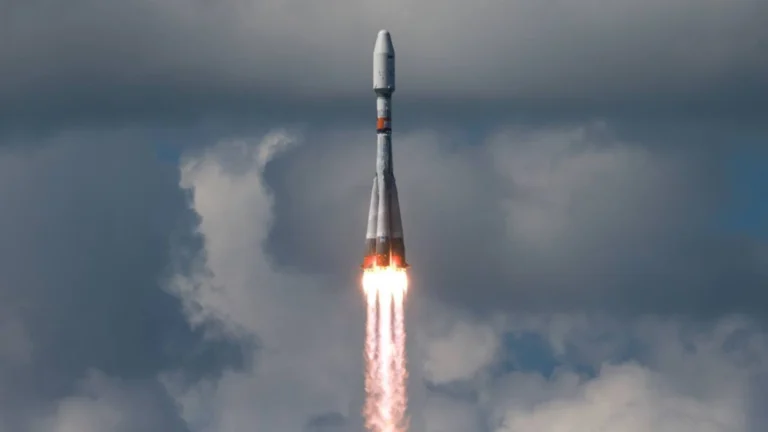
Soyuz rocket launch from Vostochny Cosmodrome, Russia, July 25, 2025. X/ @RusEmbIran
July 25, 2025 Hour: 8:19 am
An Iranian telecommunications satellite Nahid-2 is among them.
On Friday, Russia successfully launched 20 satellites into space, including an Iranian telecommunications satellite, the Russian state space corporation Roscosmos announced.
A Soyuz-2.1b carrier rocket lifted off from the Vostochny Cosmodrome in Russia’s Far East at 8:54 Moscow time (0554 GMT), Roscosmos said on its website.
The primary payload of the mission was the Ionosfera-M satellites No. 3 and No. 4, designed to study physical processes in the Earth’s ionosphere caused by both natural and human-induced factors.
These include changes in the ionosphere’s spatial and temporal structure, electromagnetic field disturbances, the composition of the upper atmosphere, and ozone distribution. The satellites will also help monitor the radiation environment.
The launch also carried 18 small satellites. Among them were nine developed by the Russian company Geoscan, which will conduct Earth imaging, track air and sea traffic, and study near-Earth space physics.
Some of the satellites are intended for educational purposes, including projects aimed at exploring satellite-to-Earth communication links and testing small satellite control technologies in low Earth orbit.
According to TASS news agency, the payload also included the Iranian-made Nahid-2 telecommunications satellite.
https://www.telesurenglish.net/russia-l ... nto-orbit/
3-Day Mourning Declared in Russia’s Far East Regions After Plane Crash

People pay tribute to the victims of a plane crash in Tynda, Russia, July 25, 2025. Photo: Xinhua
July 25, 2025 Hour: 8:31 am
PM Mishustin ordered the creation of a government commission to oversee the response and compensation process.
On Thursday, authorities in Russia’s Amur Oblast and Khabarovsk Territory declared three days of mourning following the crash of an An-24 passenger aircraft that claimed the lives of all people on board.
“With deep sorrow, I must announce that there are no survivors in the An-24 plane crash in Tynda, according to preliminary data. A three-day mourning period has been declared in the Amur Oblast. On July 25, 26 and 27, flags will be flown at half-mast across all territories of the region,” said Governor Vasily Orlov on his Telegram channel.
The Khabarovsk regional government has also announced mourning, as some of the victims were residents of the area. Governor Dmitry Demeshin said that each victim’s family would receive US$12,500 in compensation, along with coverage of travel expenses to the crash site.
All necessary payments should be made to relatives of all deceased passengers and crew members, said Transport Minister Andrey Nikitin in a statement. Russian President Vladimir Putin on Thursday expressed his condolences.
The aircraft, operated by Angara Airlines, disappeared from radar on Thursday morning when approaching Tynda airport. Its wreckage was later found on a mountainside approximately 15 km from the city.
Russian Prime Minister Mikhail Mishustin has ordered the creation of a government commission, headed by Nikitin, to oversee the response and compensation process. A criminal case has been opened to investigate the crash.
The Transport Ministry said 42 passengers and six crew members were on the crashed plane, including five children. The Chinese Consulate General in Khabarovsk confirmed that one Chinese citizen was on board.
https://www.telesurenglish.net/3-day-mo ... ane-crash/













